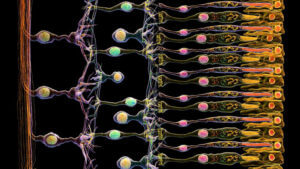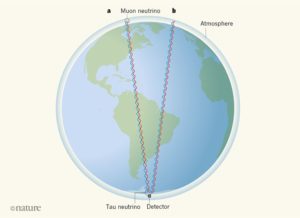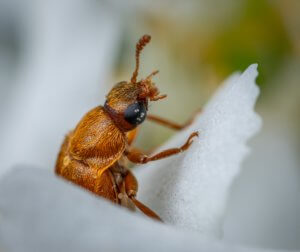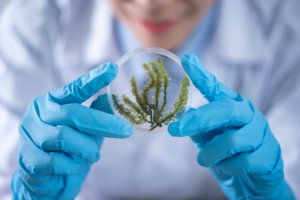Awesome science news from the web (17/08)
Once again, we bring you the awesome science news from the web; with tips on how to talk about these topics with kids – questions to ask and discussions to have.
” The most exciting phrase to hear in science, the one that heralds new discoveries, is not ‘Eureka!'(I found it!) but ‘That’s funny…’ “
-Isaac Asimov
1. I spy with my restored eye…
 A cure for certain vision impairments may be in sight. US scientists have made use of the Müller glial cell, a type of support cell that exists within eyes and has the potential to replace damaged light-detecting cells (‘photoreceptors’). Normally these cells are limited in their regenerative capacity. In blind mice, the scientists injected harmless viruses that carry several genes to make Müller glia replicate and encourage them to develop into one type of photoreceptor. Flashing light into the mice’s eyes resulted in activity in the part of the brain that receives vision-related information, suggesting they could ‘see’. Link to story
A cure for certain vision impairments may be in sight. US scientists have made use of the Müller glial cell, a type of support cell that exists within eyes and has the potential to replace damaged light-detecting cells (‘photoreceptors’). Normally these cells are limited in their regenerative capacity. In blind mice, the scientists injected harmless viruses that carry several genes to make Müller glia replicate and encourage them to develop into one type of photoreceptor. Flashing light into the mice’s eyes resulted in activity in the part of the brain that receives vision-related information, suggesting they could ‘see’. Link to story
| Sharing with kids: The eye contains many different types of cells. There are two types of light-detecting cells (or ‘photoreceptors’): rods and cones. There is another type of cell called a Müller glial cell, a cell that can replace other eye cells that are damaged. Scientists are trying to repair some types of blindness by encouraging Muller glial cells to divide and replace other damaged cells.Questions to Ask: What do rods and cones detect? What type of blindness would you have if you had damage rods or cones? What another way might someone become blind?
Suggested Answer: Rods detect movement and allow us to see when there is little light. Cones detect colours and allow us to see in bright conditions. Damage to rods results in night blindness. Damage to cones results in colour blindness. On the other hand, cortical blindness is when the brain that processes information from the eye is damaged. |
2. Grumpy robots put pressure on to give laser focus
 French researchers report that human performance in tests can be improved by being watched by a grumpy, humanoid robot. Participants were acquainted with a robot that responded to questions with either friendly or unfriendly answers. They then were tested on how fast they could identify the colour of certain words. They did this twice: first alone and also when ‘watched’ by the robot. Participants that interacted with the ‘unfriendly’ robot were faster to answer questions, perhaps because the interaction increased their alertness and hence focus. Link to the story
French researchers report that human performance in tests can be improved by being watched by a grumpy, humanoid robot. Participants were acquainted with a robot that responded to questions with either friendly or unfriendly answers. They then were tested on how fast they could identify the colour of certain words. They did this twice: first alone and also when ‘watched’ by the robot. Participants that interacted with the ‘unfriendly’ robot were faster to answer questions, perhaps because the interaction increased their alertness and hence focus. Link to the story|
Sharing with kids: Researchers have shown that you can do better during tests if you’re being watched by a grumpy, human-looking robot. They think it is because you feel more alert and can focus more, like when a strict teacher is looking over your shoulder. In their study, the test subjects had to do a tricky test to name the colour of a word they were shown. It is tricky because some words deliberately spell out the name of *different* colour. The confusion you feel is called the ‘Stroop Effect’. Suggested activity: Try doing the Stroop Effect experiment online! https://faculty.washington.edu/chudler/words.html It is easier to pay attention to what the word says compared to recognising the colour of the word. There are a few hypotheses on how this effect works. The main theory is that as with regular reading, interpreting words become ‘automatic’. In other words, we don’t have to think so much when we read words. On the other hand, we do not have to recognise and name colours often in daily life, which makes naming colours harder.
|
3. IceCube proves Einstein is as cool as ever
 The IceCube Collaboration has shown that a key scientific principle in Albert Einstein’s special theory of relativity (the famous E=mc2) still holds true. The physicists tested the principle of ‘Lorentz invariance’, which states the laws of physics are the same for different observers regardless of their position and whether they were moving etc. If the principle was incorrect, a neutrino (a subatomic ‘ghost-like’ particle) produced in Earth’s atmosphere on side of of the world would reach the IceCube detector on the other side in a slightly different form. They found no evidence of any change. Link to the story
The IceCube Collaboration has shown that a key scientific principle in Albert Einstein’s special theory of relativity (the famous E=mc2) still holds true. The physicists tested the principle of ‘Lorentz invariance’, which states the laws of physics are the same for different observers regardless of their position and whether they were moving etc. If the principle was incorrect, a neutrino (a subatomic ‘ghost-like’ particle) produced in Earth’s atmosphere on side of of the world would reach the IceCube detector on the other side in a slightly different form. They found no evidence of any change. Link to the story
|
Sharing with kids: Scientists today are still testing out the scientific theories made by the famous Albert Einstein over a hundred years ago. One of Einstein’s predictions was that the laws of physics are the same for everyone, even if they are in different places or moving. Questions to Ask: What is the difference between a theory and a hypothesis? Suggested Answer: A hypothesis is an educated guess or prediction about what might cause something to happen, or about the relationship between two things. A good hypothesis is something that you can test. Most people mistakenly think a theory is *just* a guess. But a theory is made when a hypothesis has been tested many times and there is no evidence that suggests that it is wrong. It is a widely accepted explanation. |
4. Eat, Sleep, Make Friends/Rave, Repeat
 Loneliness and social isolation have detrimental effects on our mental and physical state, including disrupting our sleep. But did you know that the opposite is also true? A study from the University of California shows that sleep-deprived people are less social. Sleep-deprived volunteers become uncomfortable when strangers approach at a distance normally considered as non-threatening by rested volunteers. Their brains also showed greater activity in areas involved in recognising threats. Other people watching videos of sleep-deprived volunteers tended to also rate such people as lonelier, and themselves felt lonely after watching them. Link to the story
Loneliness and social isolation have detrimental effects on our mental and physical state, including disrupting our sleep. But did you know that the opposite is also true? A study from the University of California shows that sleep-deprived people are less social. Sleep-deprived volunteers become uncomfortable when strangers approach at a distance normally considered as non-threatening by rested volunteers. Their brains also showed greater activity in areas involved in recognising threats. Other people watching videos of sleep-deprived volunteers tended to also rate such people as lonelier, and themselves felt lonely after watching them. Link to the story
|
Sharing with kids: People that are lonely and are not able to make friends with others often develop problems with their mental and physical health. One problem is that they do not sleep well. Scientists have recently conducted experiments to show the opposite is true: if you do not get enough sleep, you will not feel like making friends. Other people will also think that you don’t want to be friends with them. Questions to Ask: How do you feel like if you have/haven’t had enough sleep? Does your own experience agree with the results of the scientific study? What questions would you want to ask about the relationship between how much sleep people have had and their behaviour? Suggested Answer: The point of the discussion is to get kids to relate the study results with their own experience. Kids should realise that results from human behavioural studies are often intuitive and that inspiration for such studies can come from people’s own experiences. However, it is not enough to make conclusions about things just based on your own experience. Performing experiments using the scientific method helps us get rid of personal bias! |
5. Elephant genes key to long ‘LIF’e
 Elephants live long because they hardly get cancer. Now scientists at the University of Chicago know why. Many mammals have copies of the LIF gene, which makes a protein that triggers the death of cells with too much DNA damage. However, in most mammals this LIF gene is inactive and damaged cells eventually go on to become cancer. In elephants, at least one copy of the LIF gene is active. This means that when elephant cells sustain DNA damage, they commit suicide and only healthy cells are left. The researchers also suggested this may be the reason why elephants were able to become so large. Link to the story
Elephants live long because they hardly get cancer. Now scientists at the University of Chicago know why. Many mammals have copies of the LIF gene, which makes a protein that triggers the death of cells with too much DNA damage. However, in most mammals this LIF gene is inactive and damaged cells eventually go on to become cancer. In elephants, at least one copy of the LIF gene is active. This means that when elephant cells sustain DNA damage, they commit suicide and only healthy cells are left. The researchers also suggested this may be the reason why elephants were able to become so large. Link to the story
|
Sharing with kids: Elephants typically live for a long time. Part of the reason is that they don’t die of cancer. Scientists have recently shown that elephants have a gene that makes elephant cells that have too much DNA damage die. This means only healthy cells are allowed to live. Other mammals have the same gene but it has been shut down in them. Questions to ask: Did you know that the death of cells is not necessarily bad? Which ones would you want to live or die? What are the two types of cell death and which one helps prevent cancer? Suggested Answer: Death of cells with damage to DNA (the code inside cells to make proteins) is good; if they are allowed to live, they might become cancer. Apoptosis and necrosis. The body is usually good at recognising when cells are too damaged and get rid of these cells by making them undergo a controlled or ‘programmed’ cell death, called apoptosis. This is process is good for health. Necrosis is the unwanted accidental death of healthy cells, for e.g. by not having enough nutrients or when something traumatic like a snake bite happens. In general, necrosis is bad and happens in an uncontrolled way. |
Further reading: our last week’s science stories and our blog on the importance of science literacy.
Did you like what you read? Want more science delivered in fun ways? Follow us on different social media channels using the links below.
Better yet, subscribe to InquiBox to get different science mini-projects delivered home.





